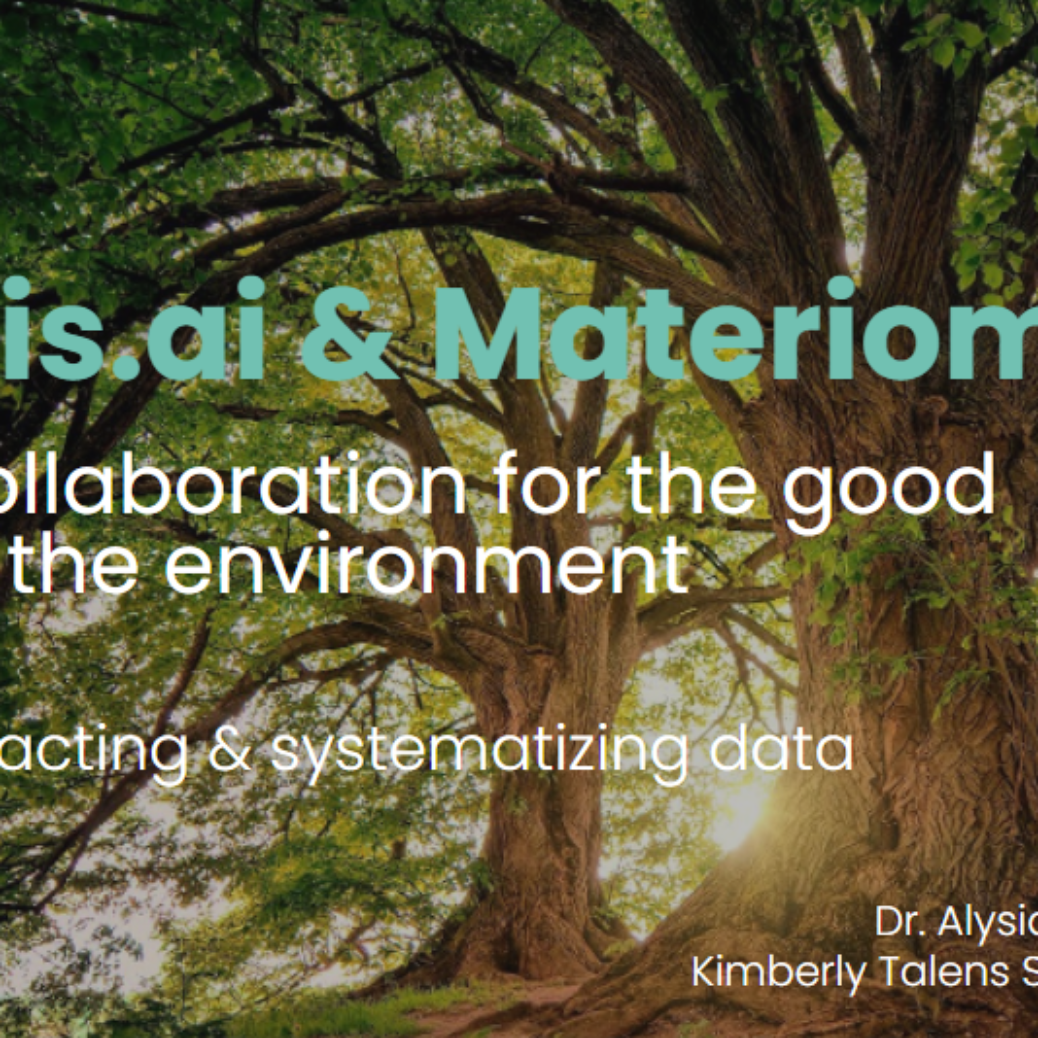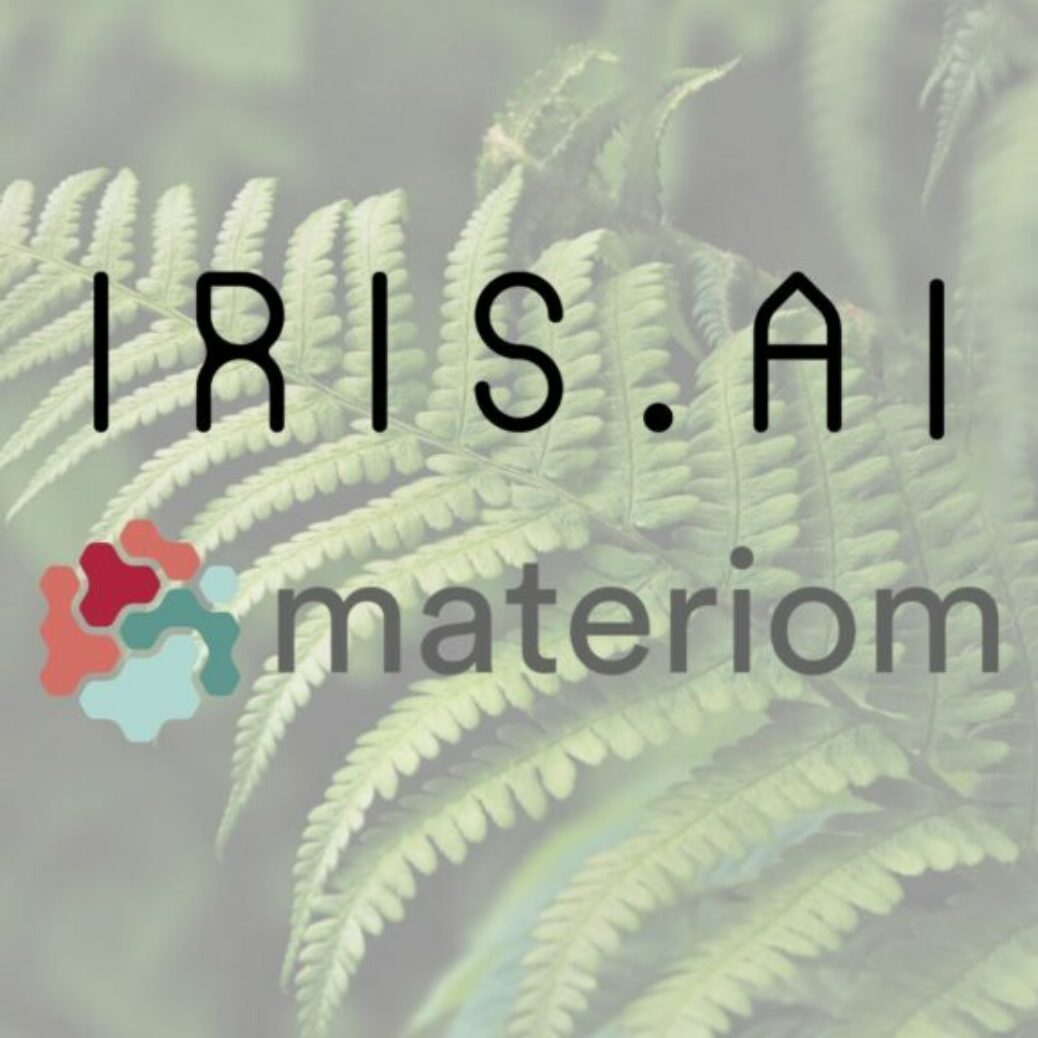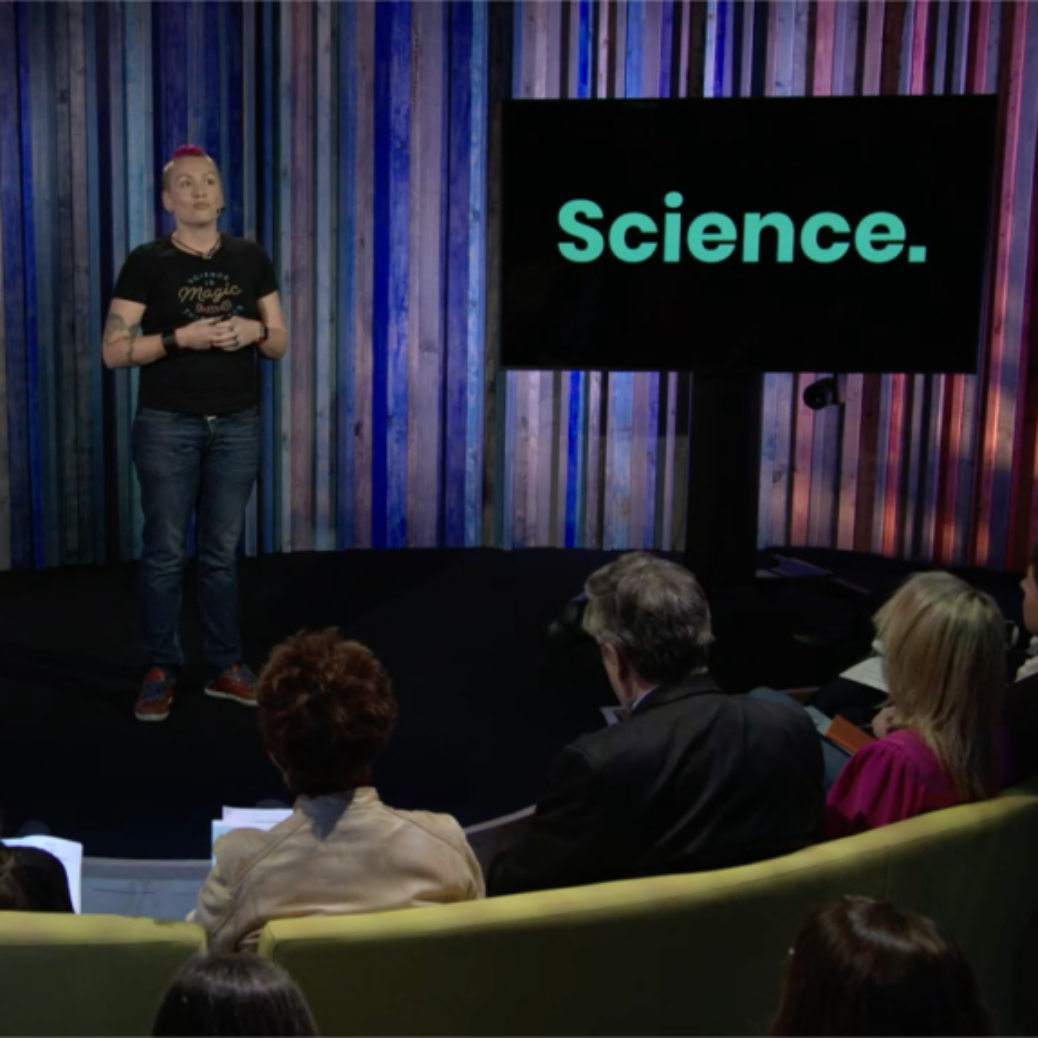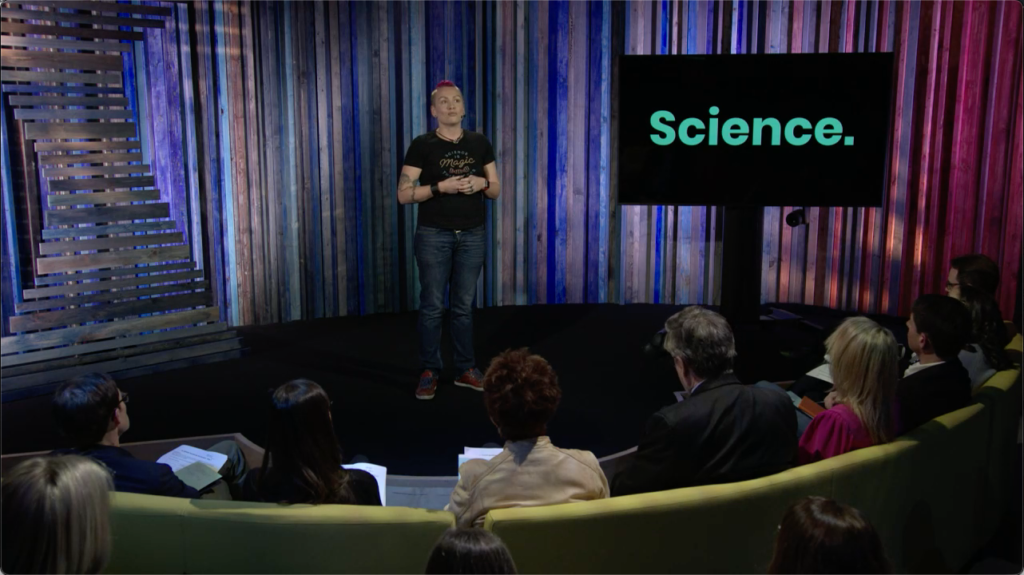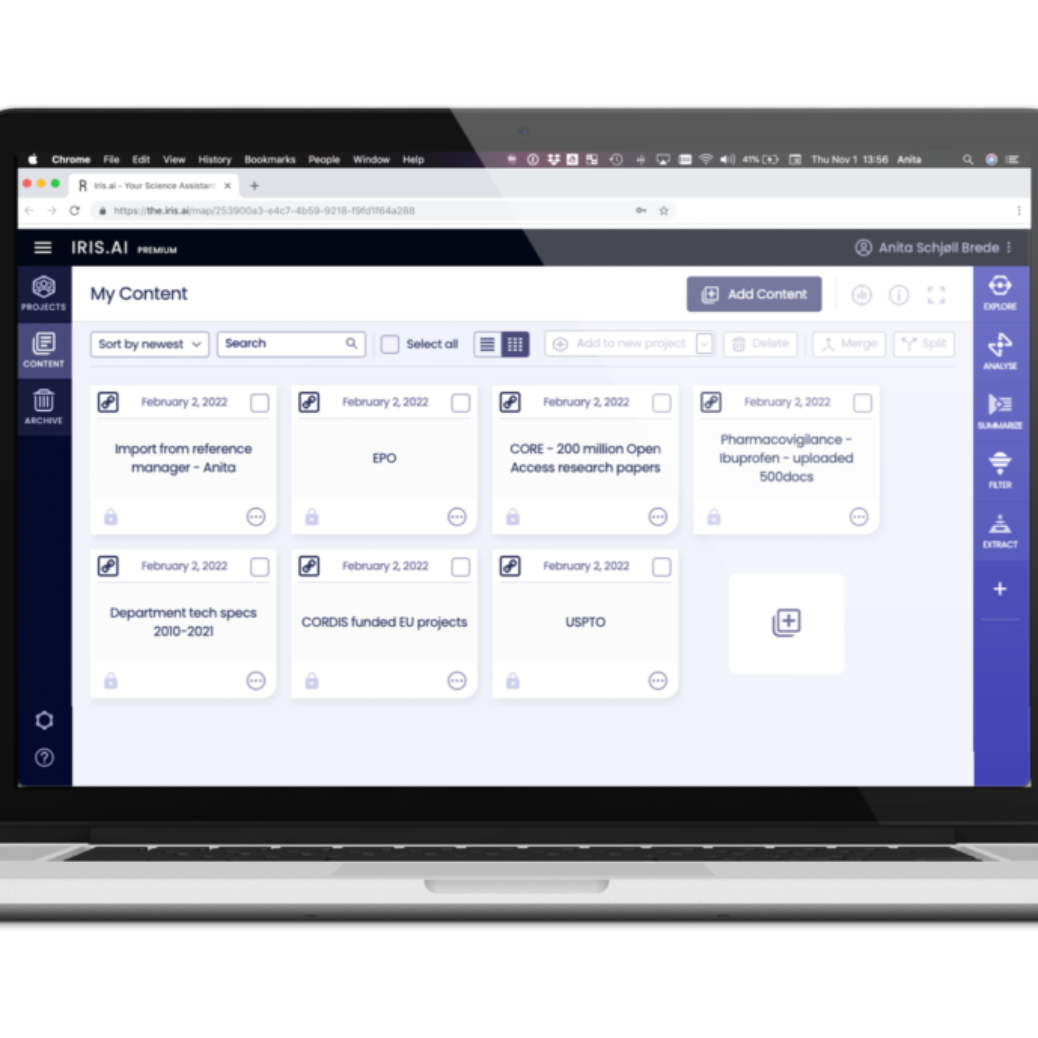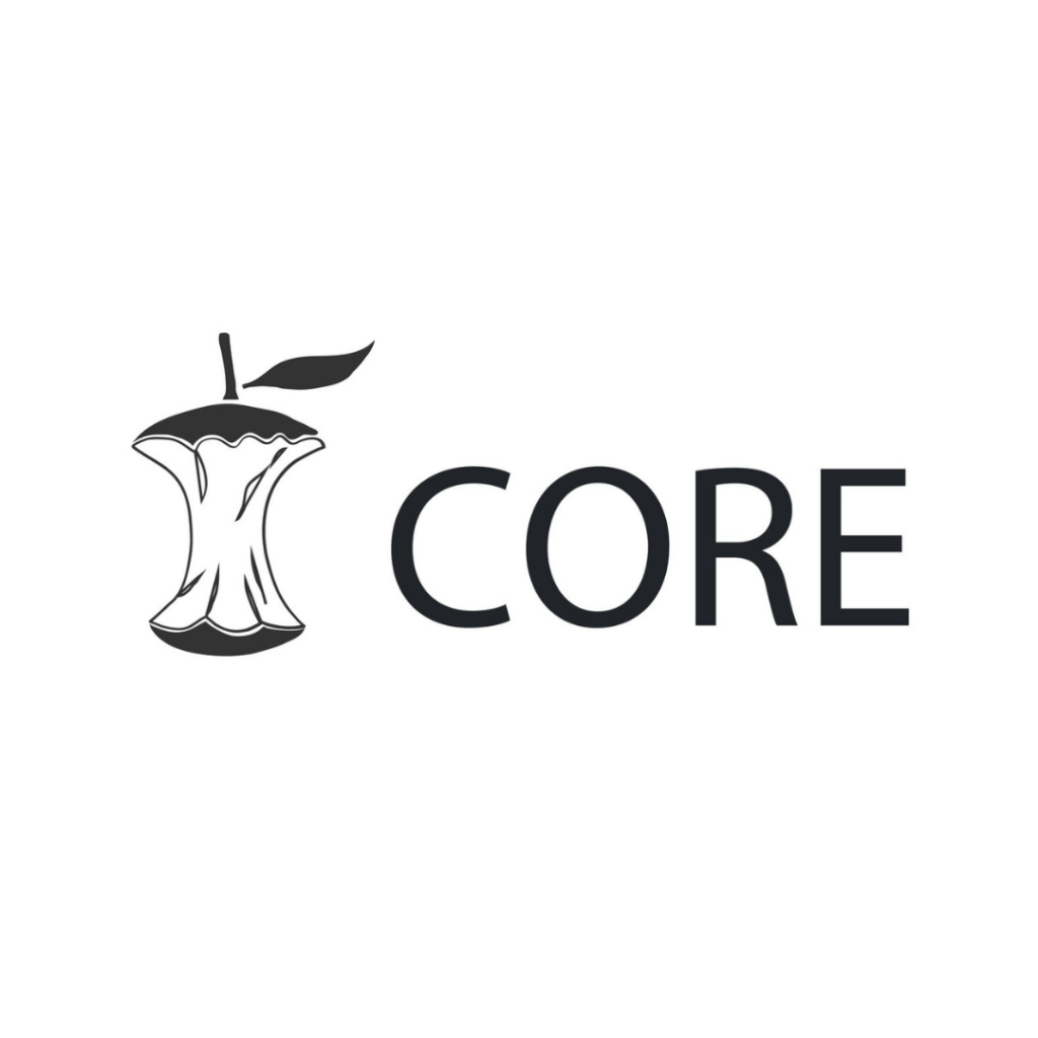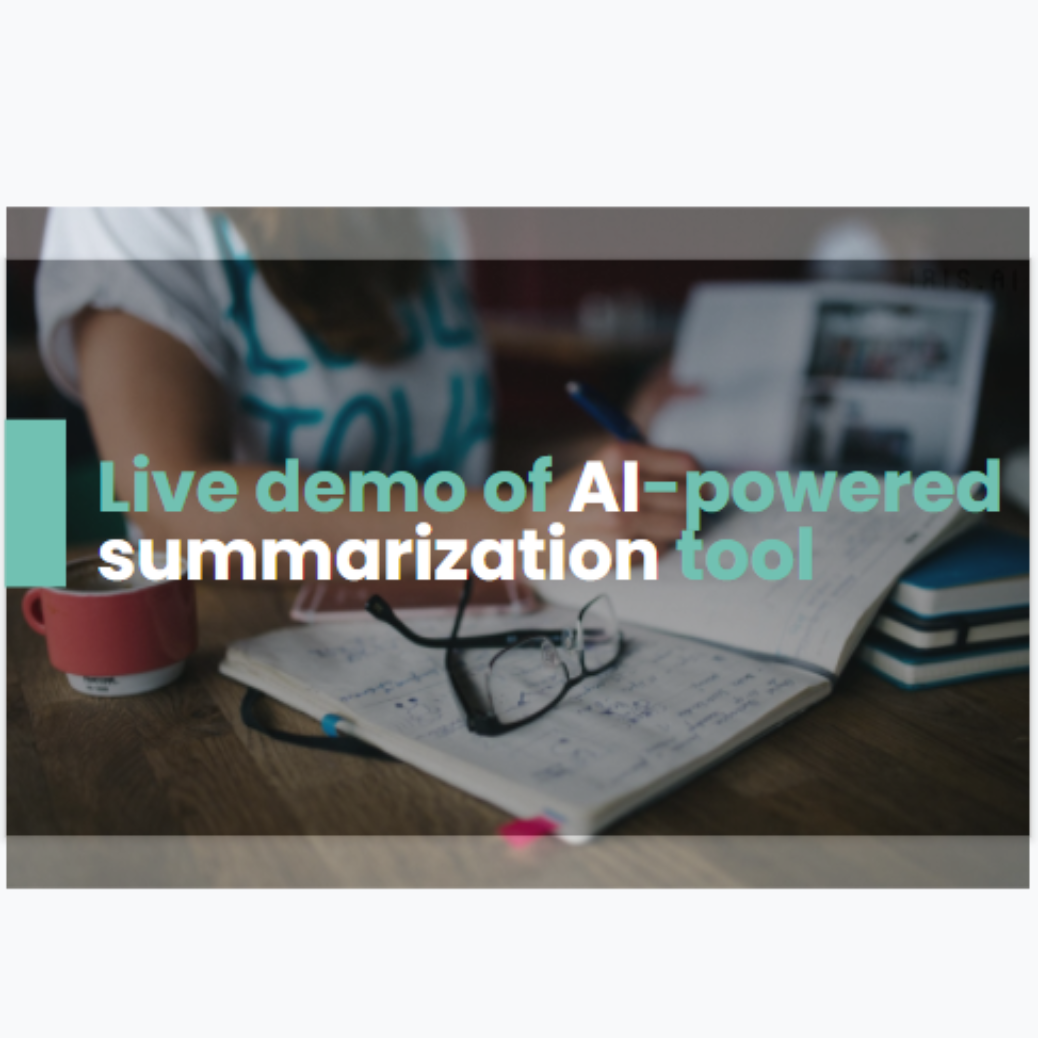WEBINAR: Iris.ai and Materiom – extracting, linking and systematizing data 💾
On May 25th 2022, we hosted a webinar together with Materiom where we shared details about our collaboration and the project. Here, you can read more about it or watch it below.
Sustainability needs innovation and innovation needs R&D. However, R&D needs time- the most precious commodity we all have in common. As a consequence of all the world’s current challenges, such as advancing global warming but with too slow progress on carbon capture, energy insecurity, or food supply crisis, researchers need time more than ever to drive innovation for a sustainable future across all industries.
In this webinar we answer:
- How can NLP, a subdiscipline of ML, save vastly more time for R&D to innovate?
- How can systematized data extractions uncover hidden knowledge scattered in thousands of research papers to contribute to the success of R&D teams and impactful projects like Materiom´s.
Materiom’s mission is to grow a regenerative materials economy. The company is building a suite of solutions that can help holistically to grow the market of petroleum alternatives. Together, we are attempting to pool the world’s data on biomaterial development and performance and make it useful to the world’s entrepreneurs.
Interview with Alysia Garmulewicz, the Co-Founder of Materiom:
How did you get this idea to create such a database?
My co-CEO Liz Corbin and I had a meeting of minds a few years ago upon founding Materiom that really crystallized a lot of our research and doctoral work. I’d been working in the sustainability world for a while in terms of being able to understand the key points that were preventing the cycling of materials. One of the main issues in a centralized manufacturing system where all of this has to go back into production is that it’s very difficult to imagine just being able to take up all those little distributed bits and put it back. In nature there is a much more distributed and nested way of cycling nutrients within local and regional ecosystems.
That was a model that we saw as very compelling but the material economy doesn’t actually work that way. The biomaterial world and the way that you can source feedstock locally and put that back into production at local and regional scales was a very compelling approach to unlocking this systemic rigidity.
The main issue about how we can unlock more local and regional capacity for making materials and making them effective at those scales is data and access to information. That was the galvanizing point of developing Materiom. The goal is to create a starting point for R&D and get to market faster. Since then it’s built into having deep dives, talking to entrepreneurs in the field, businesses that are making amazing plastics and biomaterial alternatives and seeing the challenges they face. It’s deepened over time but that was the genesis of really understanding that the missing link was access to information. If we’re going to have a more systemic change from a very centralized manufacturing system and centralized material economy to a more distributed one that allows for regenerative sources of biomass to be effective.
How did you hear about Iris and why did you choose us as a collaboration partner?
Liz (Co-CEO) was the one who stumbled across Iris. I can’t remember the exact point of reference, but it certainly stood out to us as being a solution that we were looking for specifically focused on the scientific literature. We’ve been aware that the field of natural language processing is growing but Iris.ai’s specific focus on scientific papers and scientific data itself made the most sense so it was an obvious fit from that perspective.
How would you describe our collaboration so far and do you think that we already had some major challenges that we had to overcome together?
One of the most interesting and important challenges that has shaped the first stage of our collaboration has been getting the grip of the nature of the information that we’re trying to extract. I’ve really been grateful for the amount of feedback and transparency in terms of what the challenges are and what the team is working on and being able to feed in with our domain knowledge when it’s needed. I’m sure there’s gonna be more challenges along the way but I think grappling first with just the type of information how it’s portrayed was the main one that I’ve seen in this first stage.
We are very happy to be collaborating with you. It’s always very helpful when our clients are very responsive and give feedback and tell us the questions. Sometimes you’re so deeply into the topic that maybe you don’t understand which words the outside world might not understand, so it’s very helpful to have open communication. This already leads me to my last question – what would you tell someone thinking to be collaborating with us or any other AI startup? What they should be expecting or what they should have in the back of the head?
I think one of the main things that I would emphasize is the importance of the journey – being able to learn and iterate and be responsive to the challenges along the way. It’s certainly a field or an area of solution space that really requires a lot of engagement with the topic. It’s not magic that just suddenly will appear at your doorstep. The technology is incredible but it’s even more incredible when you have the partnership between two companies – in our case Iris.ai and Materiom. That can really enrich the process and make the journey enjoyable. The more you put into it, the more you can get out of it. I really enjoy that process of working with the team and I think that it’s a really exciting learning process for us to understand how far you can push the technology and what results you can get and how that fits with the mission and the time frame and the goals that we have. It’s definitely a learning process and I think that should be enjoyed.
For the full interview watch the webinar recording here: https://youtu.be/-aInX0A_X3g
